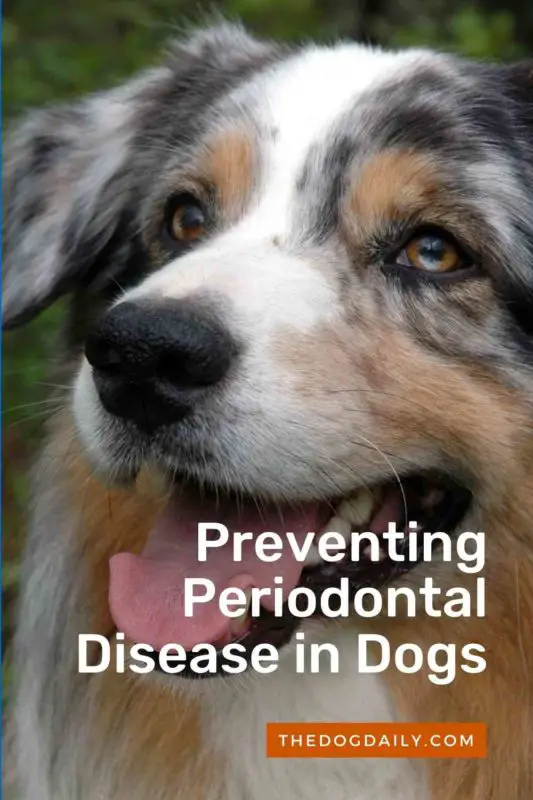Do Dogs Need Dental Care?
Did you know that 80 percent of dogs show gum disease signs by the age of three? The American Veterinary Medical Association (AVMA) does, and that’s why they have declared February Pet Dental Health Month. “Veterinarians report that periodontal disease is the most commonly diagnosed health problem in dogs,” says Dr. Larry Corry, immediate past president of the AVMA. “This can lead to painful infections in the mouth, and in severe cases, these infections can spread and become life-threatening.”
Periodontal disease in dogs can contribute to kidney, liver, heart, and bone disease development. Hence, toothbrushing and regular veterinary cleanings are as crucial to your dog’s health as they are to your own.
However, good food and habits can also fight tartar and the whole host of dental issues, such as a malodorous mouth, which goes along with it. Dr. Katy Nelson, a Virginia-based veterinarian, explains the importance of dental care and its relationship to diet. Below, dentists weigh in on how to identify and prevent dental problems in dogs.
What Does a Healthy Dogs Mouth Look Like?
According to Nelson, healthy dog gums are pink instead of red, with no tartar build-up around the gum line. What’s more, a healthy mouth does not produce intolerably stinky breath. “Your dog’s vet should always do an oral exam,” says Nelson. “In older dogs, especially [teeth] can get abscesses with no easily visible signs. A thorough assessment may require sedation.”
Dr. Linda DeBowes, a Seattle-based veterinarian, acknowledges that periodontal illness is often a silent disease. When your veterinarian diagnoses it in your dog, it’s because she has seen plaque, abscesses, loose teeth, and lower-jaw fractures, resulting in chronic dental problems. “At that point, we need a cleaning to get below the gum line, which requires anesthesia,” says DeBowes. Once under, your dog’s teeth will be cleaned with an ultrasonic scaler or a hand scaler. The veterinarian will look for loose teeth, deep dental pockets, exposed roots, or other disease signs. Some teeth may need to be extracted.
Preventing Periodontal Disease in Dogs
“Once there is disease there, it’s painful and costly to deal with,” says Dr. Trisha Joyce of BluePearl Pet Hospital. “But you can protect your dog’s teeth just like you protect your own, with daily brushing and regular checkups.” She adds: “The only difference between your dental health and your dogs is that he can’t do it for himself. His owner has to watch out for him.”
There are three ways you can make sure your dog stays dentally healthy: at-home brushing, professional cleaning, and dog food and treats containing sodium hexametaphosphate (HMP).
-
Dog Dental Cleaning at Home
Dr. Brook Niemiec, a board-certified veterinary dental specialist in San Diego, suggests beginning a dental routine with your dog as soon as possible and using the following methods for brushing:
Start with a soft toothbrush and flavored toothpaste made for pets. Human toothpaste contains detergents that may cause stomach upset. “I don’t recommend the fingertip brushes for two reasons,” says Niemiec. “The bristles are not very effective at cleaning, and this puts the pet owner’s finger at risk for a bite from even the most placid animal.”
Go slowly and be very positive, using food treats if necessary. Place the brush at a 45-degree angle to the gum line. Brush in a circular motion, with a firm stroke away from the tooth. Try to reach all tooth surfaces, but concentrate on the outside surface.
For puppies, introduce the brush at around six months — and be consistent. Animals like routines, so by making brushing a habit, it will be easier on both of you.
-
Dog Dental Cleaning Professionally
Not every dog needs its teeth cleaned yearly. With the right genes, some dogs never develop much tartar. But for the rest, regular cleanings, which require anesthesia, are necessary up to twice a year.
“We use an ultrasonic scaler, which makes a high-pitched noise and vibrates quickly. No dog on the planet will sit still while its teeth are cleaned this way,” explains Nelson.
-
Dog Food Containing Sodium Hexametaphosphate (HMP)
Food fights tartar in dogs in two ways. The first is mechanical: The simple act of chewing on something crunchy breaks up tartar. The second is chemical: The HMP, as mentioned earlier, a food additive, lives in the saliva for up to 12 hours, breaking down tartar and preventing plaque.
To boost foods’ effectiveness with this additive, Nelson suggests serving wet and dry foods separately — if you usually provide your dog with both types. “The chemical works best when it is activated by saliva, so other types of moisture can water down the process,” she explains.
Our Recommendations for Dental Food for Dogs
Our Recommendations for Dental Chews for Dogs
Nelson also says to look for a food or treat with a seal of approval from the Veterinary Oral Health Council (VOHC). “If it’s got the seal, it’s guaranteed to be a good dental treat or food” Nelson advises you proceed with caution, though, if your dog is overweight. “A lot of dental-specific diets can be high in fat, so make sure whatever diet you choose is
designed for the whole dog, and not just its mouth.”
In addition to brushing and foods, dog dental chew toys can also help maintain your dog’s dental health. Chew toys, such as Nutrichomps or Kong, help deal with plaque mechanically. While your pet chomps, tartar is broken down.
Finally, keep in mind Nelson’s three D’s of doggie dental health: daily brushing, dentistry, and diet. Follow these, and your dog can sport pearly whites throughout the rest of its life.
Article written by Authors: Rose Springer, Darcy Lockman, and Steve Jortsman

